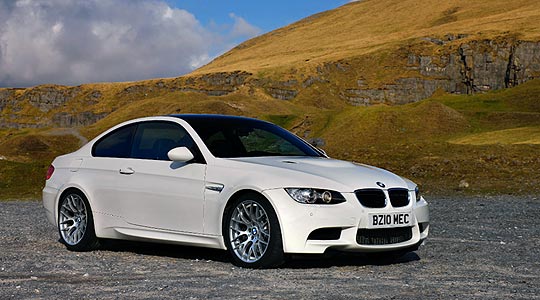
Here are the most driver-focused versions we have yet seen of BMW’s current M3 and Z4 models. One is the M3 with Competition Package, an almost self-explanatory honing of the splendid M3 into something yet sharper. And the other?
Well, the previous Z4 came in a proper M version, not to be confused with a mere M Sport model which simply adds visual aggression, lower and stiffer suspension and bigger wheels. The current Z4, however, lacks a proper M version although the somewhat superficial M Sport makeover is very popular, taking more than half of total Z4 sales. That’s all very fine, but what we really want is a real Z4 M again.
Too bad, I’m afraid. There won’t be one. Whether this is for marketing reasons or because the current M3’s V8 engine won’t fit the Z4 is unclear, but that’s the way it is. However, mindful of the need for a harder-edged, quicker and altogether more driver-centric Z4, BMW has introduced the closest thing to a new Z4 M it can readily create without a major re-engineering job. In a grand collision of random capital letters and vanishing spaces, it’s called the BMW Z4 sDrive35iS.
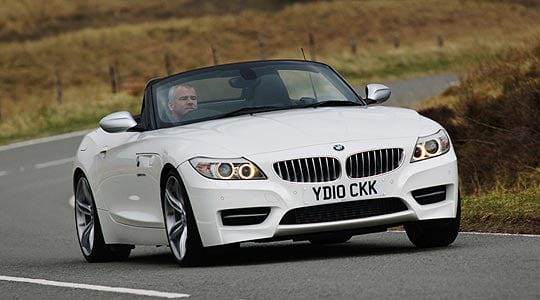
The sDrive part is vital, of course, lest you confuse it with the four-wheel drive version which, if it existed, would be called xDrive. The 35 means not that it’s a 3.5-litre engine but a turbocharged version of the 3.0-litre straight-six. And S? That really is vital, because it denotes twin turbochargers and 340bhp rather than the gentler 306bhp of the non-S, single-turbo engine.
That’s clear, then. The 35iS also gets its own look, with some silver vanes deftly added to the M Sport nose section’s brake-cooling vents and a unique rear valance with an aerodynamic diffuser. There’s a sports exhaust with a richer, louder sound than a regular Z4’s, and to the M Sport suspension with its adaptive dampers is added a quicker-ratio steering rack. A seven-speed, double-clutch transmission is standard, so there’s none of that tiresome clutch-and-lever business that we are supposed to think of as so 20th-Century.
Roof-up first (all Z4s are coupé-cabriolets), we set off on quite an undulating, sinuous test route. The combination of darty steering – it’s electrically assisted and devoid of true road feel – and video-game gear selection makes it hard to slide under the 35iS’s dynamic skin at first, because none of its responses is initially intuitive. Soon, though, it starts to make some sense as your brain undergoes a crash course in re-learning the obvious.
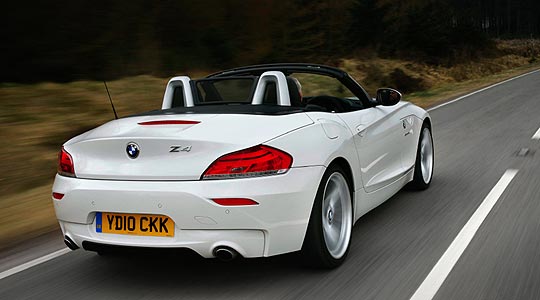
It’s certainly fast. With virtually the same power as the old Z4 M, it reaches 62mph in 4.8 seconds against 5.0, yet its CO2 rating is an impressive 210g/km against 292. And it sounds delicious, its crisp, deep, straight-six growl building to a proper howl as the revs rise. Turbochargers don’t have to smother sounds, it seems. The gearshift is quick and obedient, but such is the torque on tap (up to 332lb ft continuously, 369lb ft in short overtaking bursts) that downshifts tend to be more for acoustic delight than sudden greater accelerative need.
Good so far, then, once you’ve acclimatised to the digital-age interface. But there’s something wrong with the rear suspension. Part of the steering’s dartiness is linked to the way the rear suspension’s subframe feels as though it is attached to the Z4’s structure by a couple of large elastic bands. A quick steering movement sends the tail instantly off course, which might sound like a recipe for fabulous turn-in were the tail’s movements not so imprecise. Even on a straight road you can feel the rear wheels steering the car, and you almost can’t help exiting every bend with a tail-out flourish.
It’s fun, up to a point, but it feels artificial, impure and wrong. There’s little progression in the steering’s responses, little finesse in the way an application of power tightens the cornering line. It’s all very odd. Sport mode firms the suspension, slightly solidifies the steering, sharpens the throttle response and stimulates the gearshifts, but the problems remain. Sport Plus just destroys the ride. Opting for 19in wheels over the 18in ones does improve precision with little penalty in ride comfort, so against normal practice we’d advise doing this.
So, what do we make of the £44,220 Z4 sDrive35iS? It goes as an M-car should, but it doesn’t feel like one. It’s simply a very fast coupé or roadster, depending on weather and whim, with an unsettlingly disconnected chassis. Had BMW Motorsport been let loose on it, the result might have been rather better.
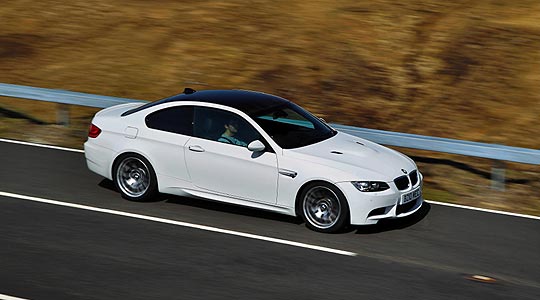
Which brings us to a real M-car, the M3 with Competition Package. Do not confuse this with the just-announced M3 GTS, a much harder-core car properly intended for racing. The M3 CP, as we shall call it, costs £56,590 against £53,275 for the regular M3 coupé. For this extra outlay you get revisions to the electronic damper control with a new, harder-edged Sport setting, new calibrations for the DSC stability system to allow more slideability, and a new design of 19in wheel in the style of the previous-generation M3 CSL. The ride height drops by 10mm, too.
The engine remains as standard but, as this means a 4.0-litre V8 with 420bhp at 8300rpm, that’s not too much of a worry. Like all current M3s, the CP mixes this ample energy potential with the full gamut of Efficient Dynamics, including – it seems incongruous in such a car, but these are changing times – a stop-start system.
Paying £3315 for some electronic tweaks, four shorter springs and different wheels doesn’t sound like brilliant value, but what matters are a) what effect the changes bring and b) whether the market will stand the premium. If a) proves positive, then b) will follow suit.
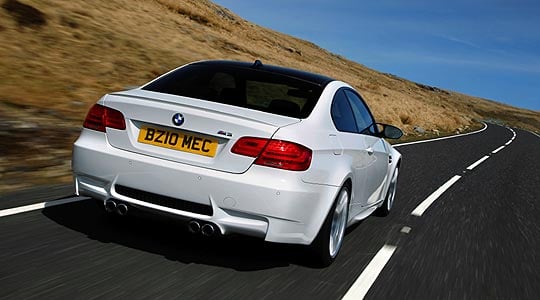
The regular M3 is a fine car in many ways, rapid and sonorous and best enjoyed with a manual gearbox. If there’s a snag, it’s in the steering, which is not good at revealing how much grip remains up front. Strong understeer on tight bends is not in the M3’s nature, but sometimes you wonder if the next bend will prove to be the exception.
For that reason alone, the M3-with-CP works. That initial phase of turn-in uncertainty has gone, replaced by the solid, positive, progressive, connected feel that the hot Z4, mentioned above, could also use. The CP is the easiest current-generation M3 coupé of all to drive with vigour on challenging roads, because it tells you what it is doing rather than trying to sort it all out by itself while hoping you won’t notice. The revised DSC settings let you nibble at the edges of grip without coming up against an electronic cushion, while the revised suspension, contrary to expectations, copes well with UK roads in their present state of decay.
Driving the M3-with-CP is like not knowing you were short-sighted until you’ve tried the correct glasses. Clarity is restored, and it feels marvellous.
Text - John Simister
Photos - BMW
ClassicInside - The Classic Driver Newsletter
Free Subscription!






